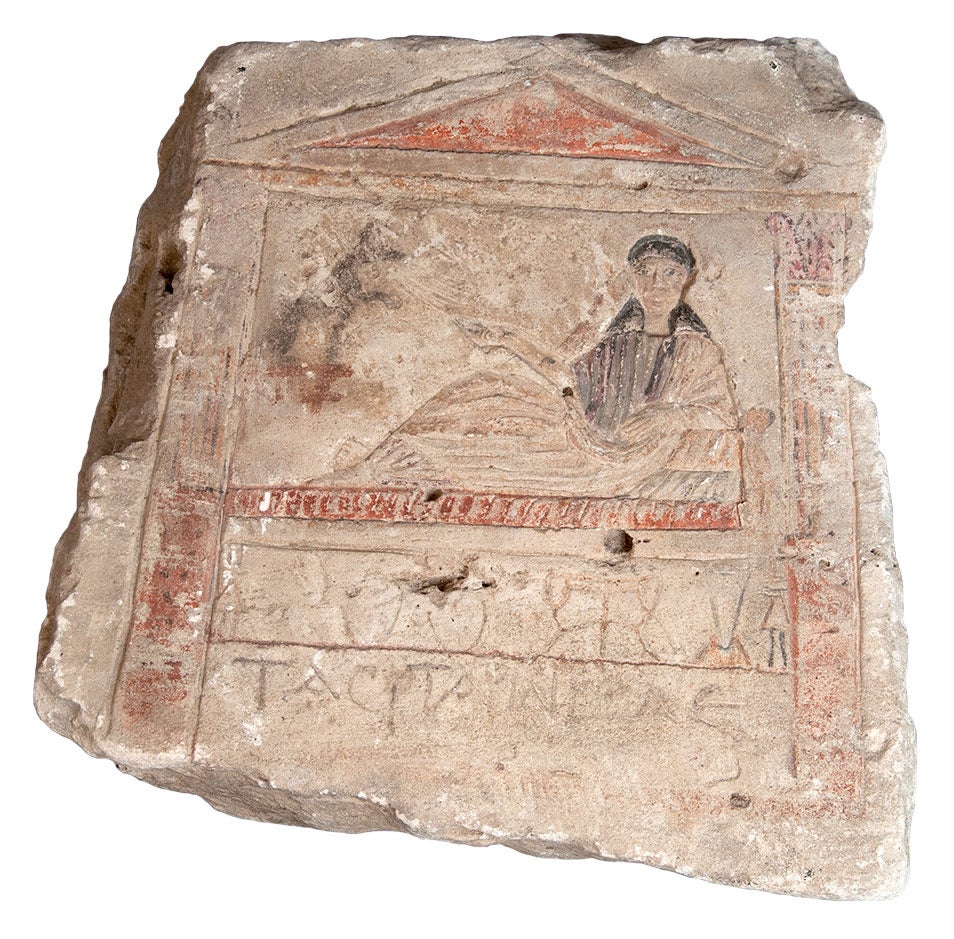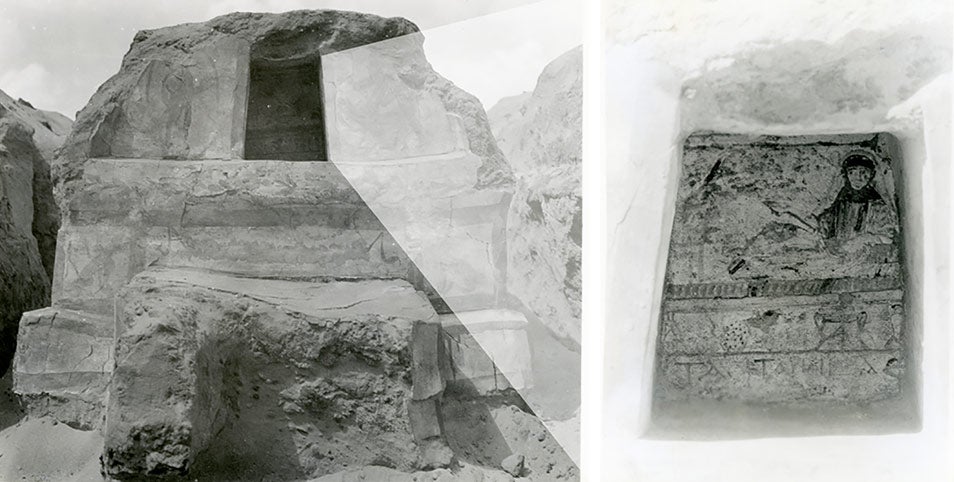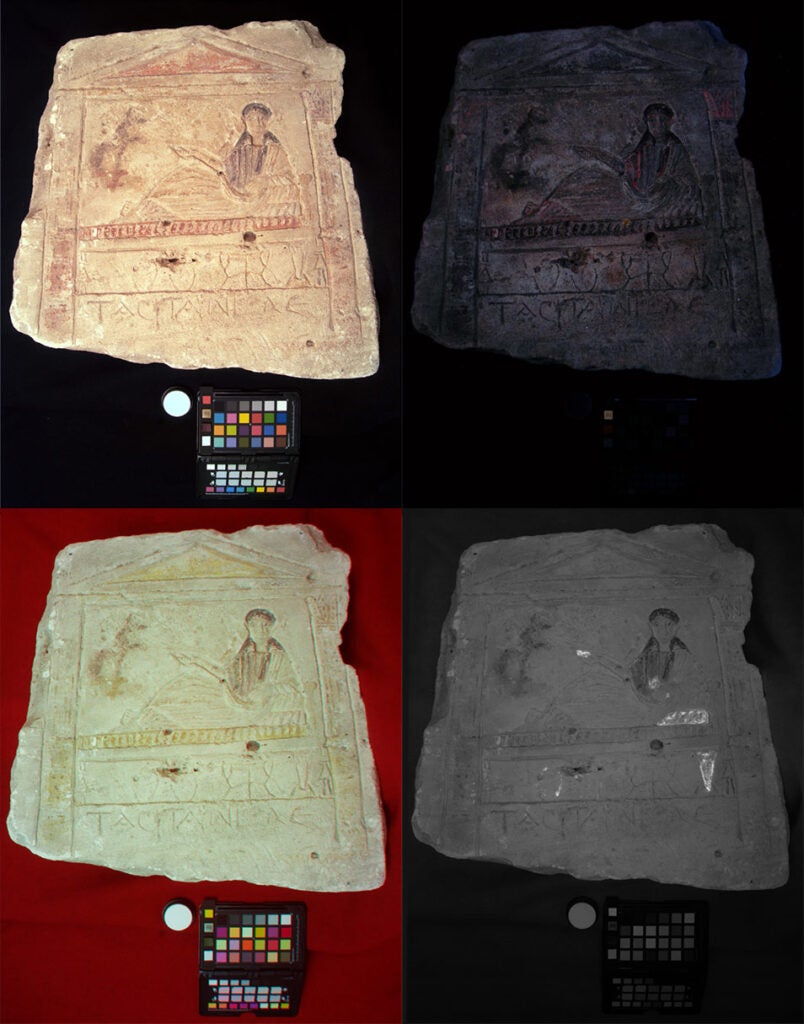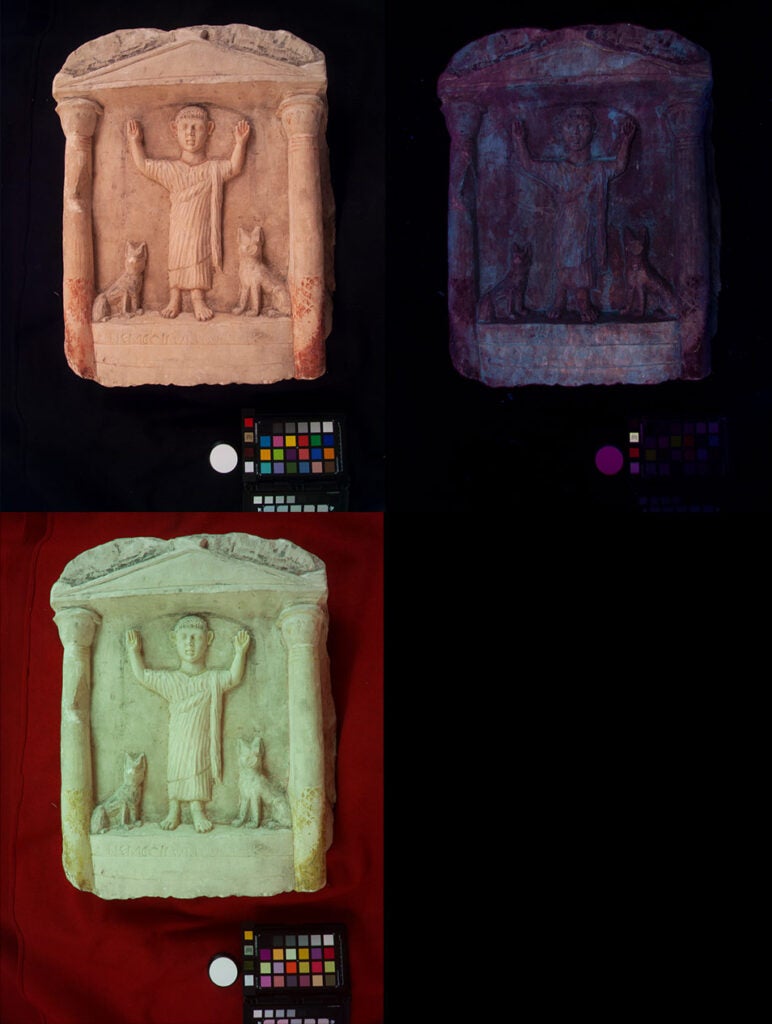Terenouthis Stela of a Reclining Woman (KM 21169)
Hundreds of painted, mudbrick tomb structures were discovered in the ancient cemetery at Terenouthis, and each structure had a niche that contained a limestone grave marker. Each grave marker (or stela) was decorated with an image of the deceased, and many were also inscribed with the name, age at death, and other personal details about the individual. This stela, erected for a woman named Tasitarion, was discovered in what is probably the Kelsey’s best-documented tomb assemblage from Terenouthis.
This object also has one of the best-preserved color schemes of any of the Terenouthis stelae, consisting of red earth (alone and possibly in a mixture), madder lake, yellow earth, green earth, Egyptian blue, and carbon black. These colors were selected for specific purposes: to convey specific materials, like wood (yellow couch), glass (blue amphora), and colorful stone (pink column capitals); to showcase a beautiful garment (striped tunic); and to evoke religious ideas, such as resurrection (red shroud).

Terenouthis Stela of a Standing Man (KM 21052)
The finely carved limestone grave marker of Nemesion shows the deceased individual standing with his arms raised in a position associated with prayer. He is flanked on either side by seated jackals—gatekeepers of the afterlife. These canine figures are painted black—as they are on most of the stelae—and there are pink border lines painted onto the incised lines around the inscription and within the architectural framework of the stela. Nemesion himself is painted with a pink skin tone (a mixture of what appears to be red iron oxide and lead white) and a mantle that appears to be lead white.
The presence of lead white is not a surprise given the frequent use of lead carbonate as a white pigment in Roman Egyptian painting (see the many examples in the APPEAR Project database). What is exciting to us about its presence is the potential for future research. Lead white pigment contains isotope ratios that can be site-specific—they can be traced back to a particular geographical location, which in turn can tell us about where the pigment may have originated. Red lead pigment on a mummy from Hawara, Egypt, was traced back to mines in Rio Tinto, Spain—evidence of the movement of paint materials from one part of the Roman empire to another.






